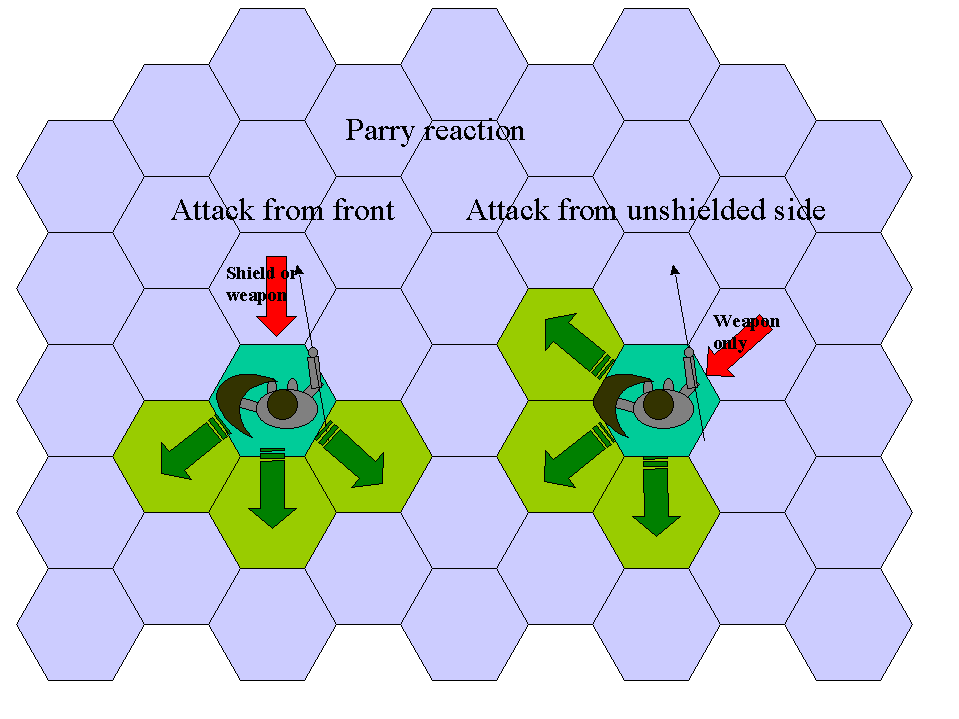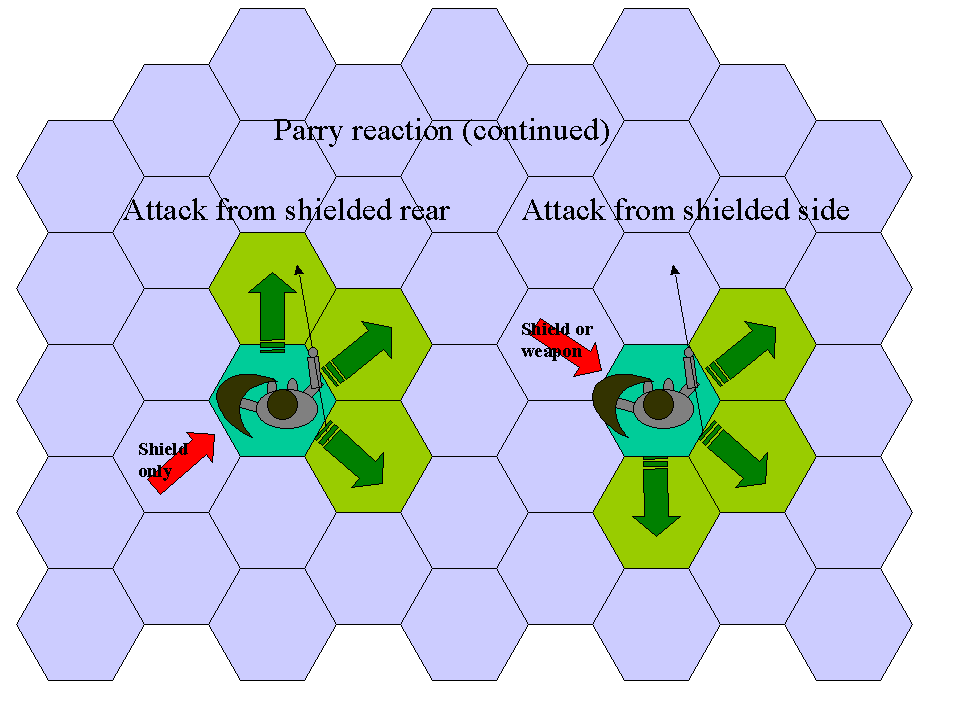
This reaction allows a phasing or non-phasing character to attempt to move away from an incoming attack and deflect it with a ready weapon or shield, making it harder for the incoming attack to hit. Only the target of an attack can make a parry reaction. The character can optionally turn 60 degrees at the start of the reaction and then must move one hex away from the direction of the attack on the combat "board" (see diagram below). The direction of the attack affects what the character may use to parry the attack. A weapon may be used to parry the attack if it is incoming from the character's front three hexes; a shield may be used if the attack is incoming from the shielded side three hexes (see the diagram below).


A parry reaction uses two action points.
A parry reaction allows the character to use his/her parrying weapon skill in the dice roll that determines whether the attack hits him/her, and also gives him/her a +3 additional bonus.
Follow-ons: If a character successfully parries an incoming attack (stepping backwards in the process), he/she can follow up with an immediate advance and attack action against the opponent (stepping forwards again). This represents a riposte maneuver. Because the weapons do not lock in a parry (unlike in a block), the successful parrier may use the same weapon he/she parried with (or a second ready weapon) for the riposte attack, and the opponent may use the original attacking weapon to block or parry the riposte.
If a character unsuccessfully parries, he/she can follow up with a Soak follow-on to reduce the damage from the blow.